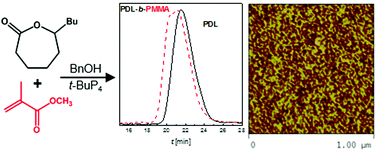Organocatalytic sequential ring-opening polymerization of a cyclic ester and anionic polymerization of a vinyl monomer†
Abstract
Organocatalysis has provided new tools for making block copolymers, in particular active species able to polymerize monomers of different chemical nature such as cyclic esters, cyclic carbonates and epoxides. We report herein the first example of an organocatalytic active species able to polymerize sequentially a cyclic ester, ε-decalactone, and a vinyl monomer, methyl methacrylate. The resulting block copolymer shows the properties of thermoplastic elastomers.



 Please wait while we load your content...
Please wait while we load your content...